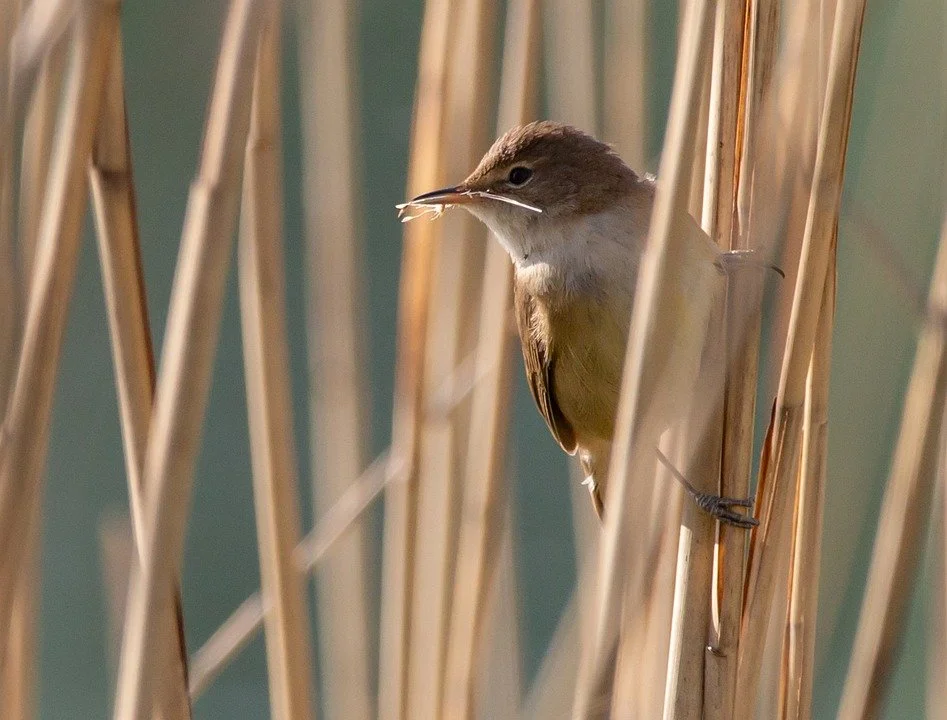Reed Warbler
Acrocephalus scirpaceus
Many of our summer visitors have watered down their vocal efforts by the end of June, but across much of England the Reed Warblers have plenty of welly left to give.
Odd isolated sounds from Reed Warblers can be tricky to pin down. The bird making the noise will often be tucked away, low along a reedy ditch or pondside, or out in the thick of a reedbed. From there they can frustrate you with anonymous squeaks, whirrs and chirrups.
But once warmed up, Reed Warblers give themselves away with rhythm as well as repertoire.
Reed Warblers make all kinds of noise, but they like to repeat a short phrase two or three times, change, repeat something else a few times, and change again.
It’s rather like the approach taken by the Song Thrush, but Reed Warblers don’t pause between the changes, and they chug away at a fair lick. In beats per minute they’re high-tempo disco or hard rock. Around about I’m So Excited by the Pointer Sisters, or Riff Raff by AC/DC.
Like many other warblers, Reed Warblers are skilful mimics and like to stitch other noises into their song. Listen at 54 and 58 seconds in to the recording above and you may hear a familiar garden bird sound.
Though often hard to see at first, Reed Warblers like to move around while they sing, and have a habit of jumping up the reed stems until they’re in view.
The plain brown colouring, strong bill and pale throat are the clearest features, while the lack of a strong black eye-stripe separates them from the similar-sounding sedge warbler (next week’s featured shrieker).
Reed Warblers raise one or two broods, mainly of their own young but including a few Cuckoos, before disappearing back to central and southern Africa in early autumn.
